The Secret, Generational War on Circassians and Kurds
Last Updated on June 3, 2024 by Hamad Subani
This post is an extension of an earlier theory discussed on this website, which demonstrated that our secret rulers are Phoenician in origin. If that is indeed the case, then many major conflicts today may actually be Phoenician operations aimed at decimating their historical enemies. The Circassians and the Kurds (among many others, such as certain Turkic groups) can be considered as such “historical enemies.” Out of finger-gnawing fear, it seems that the Phoenicians continue to be terrified by these now poor and stateless people. And with other dumb people committing their entire nations and resources to the Phoenicians, the Phoenicians are more than happy to continuously fight the shadows of those who once threatened them. On the other hand, it is unlikely that these targeted groups are even aware of what they are up against.
Just as the Phoenicians are obscured from history, so are their historical enemies. It seems that the common denominator among these “historical enemies” is that they have always been fiercely independent people, and they are now Muslims. Of course, Circassians and Kurds are not the only ones. But this analysis reveals that they occupy top positions on the hit list.
This article uses information and pictures freely available on the Internet and on Wikipedia. The truth was always out there. It’s only much-needed analysis which is always missing censored.
Most readers have a fleeting recollection of who these two ethnic groups are today, or where they tend to be located. Of course, these two ethnic groups are not perfect people and have their own faults. But the organized persecution these two groups faced, from ancient times, is actually a carefully coordinated program, still being operated by the same old perpetrators. And many of these genocides and persecution have been completely obscured from history, so that a pattern is not readily noticeable.
The Circassians

The Circassian people are an ancient ethnic group associated with the Caucasus region. They are also known as Cherkess or Adyghe. They are sometimes associated with the Muslims of Chechnya.
In an exhaustive review of a theory of Miles Mathis and Gerry on this website, we learnt that the Phoenicians had destroyed an advanced civilization in Anatolia known as the Hittites. The Hittites were probably the first humans to use iron alloys, which is maybe why the Phoenicians targeted them (after appropriating their technology). According to some suppressed (1, 2, 3) theories, the Hittites were predecessors of the Circassians. There is also a theory that Circassia is a reference to Kassites, who could be an even more ancient ancestor group, who competed with the Ancient Spookians for control over Mesopotamia. Some say that they may also be related to Cimmerians, a group which clashed with Greek-Phoenicians.

Enter Islam. In the earliest phases of Muslim-Arab expansion, we see frequent battles with the Khazars over control of the Caucasus. Eventually, most of the Caucasus became Muslim.

The Kurds

Now let’s talk about another group of people, the fiercely independent Kurds. They are not Circassians, but their history and fate seems to be closely intertwined with that of the Circassians. It is established that the Kurds are an Iranian people. So were the Mittani, who established a kingdom in northern Syria. Prior to destroying the Hittites, the Phoenicians had destroyed the Mittani.
But it seems the Kurds lingered on in other regions. In 401 BC, they routed Greek-Phoenicians marching into Iran at the battle of Cunaxa. Greek historians would later cover it up as a strategic retreat. Later when Persian-Phoenicians established themselves over Iran as the Sassanians, we find numerous reports of Kurds giving them battle. They inflicted a major defeat on the Sassanian King Ardashir I. Later they gave battle to Sassanian King Shapur II. After the Islamic conquest of Persia, almost all Kurds became Muslim.
In the 10th-12th centuries, a number of Kurdish principalities and dynasties were founded, ruling Kurdistan and neighbouring areas.
- The Shaddadids (951–1174) ruled parts of present-day Armenia and Arran.
- The Rawadid (955–1221) ruled Azerbaijan.
- The Hasanwayhids (959–1015) ruled western Iran and upper Mesopotamia.
- The Marwanids (990–1096) ruled eastern Anatolia.
- The Annazids (990–1117) ruled western Iran and upper Mesopotamia (succeeded the Hasanwayhids).
- The Hazaraspids (1148–1424) ruled southwestern Iran.
- The Ayyubids (1171–1341) ruled Egypt, Syria, Upper Mesopotamia and parts of southeastern Anatolia and the Arabian Peninsula. The Ayyubids trace their origin to the Kurdish Rawadids of Azerbaijan.
Of all of these, the most important are the Ayyubids. The Ayyubid dynasty was a Muslim dynasty of Kurdish origin, founded by Saladin. His father was appointed the military governor of Tikrit by the Turkic Seljuks, who were in constant struggle with remnants of the crypto-Phoenician Byzantines. His father later assisted the illustrious Turkic noble Imad al-Din Zengi, who went on to establish the Zengid dynasty, which ruled as vassals of the Seljuks. The Zengids operated out of Mosul and Sinjar. For some reason, both towns became the chief target of US forces in the Second Gulf War. The Seljuks were based out of Damascus and Aleppo, which have also been pretty much destroyed in recent times. Imad al-Din Zengi made Saladin the commander of the former Phoenician stronghold of Baalbek.

Saladin Pushes Crypto-Phoenician Fatimids out of Egypt

Although the Phoenicians had lost control of Egypt, Mesopotamia and the Levant in the years following the death of the Prophet of Islam, they had tenaciously hung onto Tyre so far, and in Egypt they had managed to re-establish themselves through the Ismaili, crypto-Phoenician Fatimids. Most of the Phoenician nobles had fled to Europe early on, and now they intended to return as “Crusaders.” It is thus no surprise that the Crusaders began arriving in Egypt, to strengthen the Fatimids against Zengids. Nur-ad Din Zengi dispatched the Ayyubids against the Crusaders in Egypt. This ended with Saladin booting the Fatimid crypto-Phoenicians from Egypt for good, and establishing Sunni Islam as opposed to the deviant practices of the Ismailis that had been promoted. The crypto-Phoenician Ismaili leaders fled to Iran and we will hear about them later. They have certainly not forgiven Saladin for this. To quote an earlier book of mine,
In 1988, Salman Rushdie, a nobody in the literary world, published The Satanic Verses. Based on the text of The Satanic Verses, there are indications that Rushdie is a crypto-Ismaili. He was named after the crypto-Ismaili philosopher-scientist, Ibn Rushd aka Averroes. While The Satanic Verses did indeed carry some inflammatory insinuations directed against the Prophet of Islam and his family, the book appears to be an imbecilic and juvenile display of Rushdie’s hatred of traditional Ismaili foes, such as Saladin (who had put an end to the Ismaili Fatimid dynasty).
Saladin starts undoing the “Crusades Project.”
Soon, Saladin’s forces were pushing remnants of the Phoenicians out of North Africa. African Tripoli had been retaken by the Crusaders, but in 1174, Saladin managed to push them out. Saladin’s forces even established themselves over Yemen and the holy cities in Arabia.


As you can see from the above map, Saladin was following the Seljuk and Zengid pattern of establishing himself over Phoenicians strongholds, and he too would face opposition from remnants of the Phoenicians, this time, disguised as Crusaders. To quote,
In the summer of 1183, after ravaging eastern Galilee, Saladin’s raids there culminated in the Battle of al-Fule in the Jezreel Valley between him and the Crusaders under Guy of Lusignan. The mostly hand-to-hand fighting ended indecisively. The two armies withdrew to a mile from each other and while the Crusaders discussed internal matters, Saladin captured the Golan Plateau, cutting the Crusaders off from their main supplies source. In October 1183 and then on 13 August 1184, Saladin and al-Adil besieged Crusader-held Karak, but were unable to capture it. Afterward, the Ayyubids raided Samaria, burning down Nablus. Saladin returned to Damascus in September 1184 and a relative peace between the Crusader states and the Ayyubid empire subsequently ensued in 1184–1185.
[…..]
Saladin besieged Tiberias in the eastern Galilee on 3 July 1187 and the Crusader army attempted to attack the Ayyubids by way of Kafr Kanna. After hearing of the Crusaders’ march, Saladin led his guard back to their main camp at Kafr Sabt, leaving a small detachment at Tiberias. With a clear view of the Crusader army, Saladin ordered al-Muzaffar Umar to block the Crusaders’ entry from Hattin by taking a position near Lubya, while Gökböri and his troops were stationed at a hill near al-Shajara. On 4 July the Crusaders advanced toward the Horns of Hattin and charged against the Muslim forces, but were overwhelmed and defeated decisively.

At the battle of Hattin, Saladin managed to lure the Crusader army away from their defensive fortification and towards the coast of the Sea of Galilee. Except that they were prevented from accessing its water. And their heavy metal armour ended up baking them in the sun. This was the most significant Crusader defeat to date. To quote,

According to the chronicler Ernoul, news of the defeat brought to Rome by Joscius, Archbishop of Tyre caused Pope Urban III to die of shock. Urban’s successor, Pope Gregory VIII, issued the bull Audita tremendi calling for a new crusade within days of his election. In England and France, the Saladin tithe was enacted to raise funds for the new crusade. The subsequent Third Crusade did not get underway until 1189, but was a very successful military operation through which many Christian holdings were restored. Nonetheless, Christian control over territories in the Holy Land remained vulnerable for decades until the Battle of La Forbie of 1244, 57 years after the Battle of Hattin, which marked the genuine collapse of Crusader military power in Outremer.
To further quote the same article,
Four days after the battle, Saladin invited al-Adil to join him in the reconquest of Palestine, Galilee and Lebanese coast. On 8 July the Crusader stronghold of Acre was captured by Saladin, while his forces seized Nazareth and Saffuriya; other brigades took Haifa, Caesarea, Sebastia and Nablus, while al-Adil conquered Mirabel and Jaffa. On 26 July, Saladin returned to the coast and received the surrender of Sarepta, Sidon, Beirut, and Jableh. In August, the Ayyubids conquered Ramla, Darum, Gaza, Bayt Jibrin, and Latrun. Ascalon was taken on 4 September. In September–October 1187, the Ayyubids besieged Jerusalem, taking possession of it on 2 October, after negotiations with Balian of Ibelin.
Karak and Mont Real in Transjordan soon fell, followed by Safad in the northeastern Galilee. By the end of 1187 the Ayyubids were in control of virtually the entire Crusader kingdom in the Levant with the exception of Tyre, which held out under Conrad of Montferrat. In December 1187, an Ayyubid army consisting of the garrisons of Saladin and his brothers from Aleppo, Hama, and Egypt besieged Tyre. Half of the Muslim naval fleet was seized by Conrad’s forces on 29 December, followed by an Ayyubid defeat on the shoreline of the city. On 1 January 1188, Saladin held a war council where a withdrawal from Tripoli was agreed.
Saladin’s conquest of Jerusalem is considered as peak Saladin. After all, the Crusades were organized to save the Holy City of Jerusalem from the Muslims. Or were they? It seems the “Crusaders” were more anxious to hold onto the Phoenician stronghold of Tyre rather than Jerusalem. Notice that?
It seems the “Crusaders” were more anxious to hold onto the Phoenician stronghold of Tyre rather than Jerusalem. Notice that?
The Phoenician desperation to save Tyre (NOT Jerusalem!)
It seems the Phoenicians realised that Saladin would return to retake Tyre. To quote the same article:
Pope Gregory VIII called for a Third Crusade against the Muslims in early 1189. Frederick Barbarossa of the Holy Roman Empire, Philip Augustus of France, and Richard the Lionheart of England formed an alliance to reconquer Jerusalem. Meanwhile, the Crusaders and the Ayyubids fought near Acre that year and were joined by the reinforcements from Europe. From 1189 to 1191, Acre was besieged by the Crusaders, and despite initial Muslim successes, it fell to Crusader forces. A massacre of 2,700 Muslim prisoners of war ensued, and the Crusaders then made plans to take Ascalon in the south.
The Crusaders, now under the unified command of Richard, defeated Saladin at the Battle of Arsuf, allowing for the Crusader conquest of Jaffa and much of coastal Palestine, but they were unable to recover the interior regions. Instead, Richard signed a treaty with Saladin in 1192, restoring the Kingdom of Jerusalem to a coastal strip between Jaffa and Beirut. It was the last major war effort of Saladin’s career, as he died the next year, in 1193.
In other words, this grand Crusade effort was to prevent Tyre from falling into Saladin’s hands. The “Crusaders” were content with the reconquest of “coastal Palestine” (read: Tyre and its outposts). As for Jerusalem, the “Crusaders” actually allowed Saladin to control it! This betrays everything they taught you about the crusades.
After Saladin, the Ayyubids would crumble in the absence of capable leadership. And the crypto-Phoenicians began mounting offensives on them from all sides. These were not just the Crusaders, but the newly established Khwarezmshahis in Iran, whom I have covered in an earlier book (they were instrumental in facilitating the later Mongol invasion of the Islamic world). These were probably the crypto-Phoenician Ismailis that Saladin had booted out of Egypt.
The Turkic Bahri Mamluks

Like their Turkic predecessors, the Zengids and the Seljuks, the Kurdish Ayyubids created fighting units out of Turkic soldiers, or Mamluks as they were known. In the early history of Islam, these were Turkic captives who fell into the hands of the advancing Arabs, and became their “slaves,” and Mamluk roughly translates into that. When Ayyubid power began declining in Egypt, some of these Turkic fighting units started emerging as powerful political groups. One such powerful Turkic group was the Bahri Mamluks. Their name “Bahriyya” means “of the river,” referring to the location of their original settlement on Al-Rodah Island in the Nile. Their castle of Al-Rodah was built by one of the last Ayyubid Sultan, As-Salih Ayyub.
The End of the Crusades
During the reign of Ayyubid Sultan As-Salih Ayyub, a Crusader fleet of 1,800 boats and ships arrived in Cyprus with the intent of launching a Seventh Crusade against the Muslims by conquering Egypt. Their commander, Louis IX, attempted to enlist the Mongols to launch a coordinated attack on Egypt, but when this failed to materialize, the Crusader force sailed to Egypt alone. As-Salih Ayyub arrived in Egypt and raised a counterforce, but soon fell ill, and would die. His Turkic wife, Shajar al-Durr, along with his Bahri Mamluk generals, Rukn al-Din Baybars and Aybak, countered the assault and inflicted heavy losses on the Crusaders. At the battle of Fariskur, the crypto-Phoenician King Louis and his companions ended up being captured and arrested. Credit goes to Baybars for the victory. Baybars had earlier distinguished himself in the Ayyubid victory against the Crusaders at the Battle of La Forbia. To quote,

In 1250, he supported the defeat of the Seventh Crusade of Louis IX of France in two major battles. The first was the Battle of Al Mansurah, where he employed an ingenious strategy in ordering the opening of a gate to let the crusader knights enter the town; the crusaders rushed into the town that they thought was deserted to find themselves trapped inside. They were besieged from all directions by the Egyptian forces and the town population, and suffered heavy losses. Robert of Artois, who took refuge in a house, and William of Salisbury were both killed, along with most of the Knights Templar. Only five Templar Knights escaped alive. The second was the Battle of Fariskur which essentially ended the Seventh Crusade and led to the capture of Louis IX. Egyptian forces in that battle were led by sultan Turanshah, the young son of recently deceased as-Salih Ayyub.
Following this defeat, the Phoenicians wrapped up the “Crusades” project altogether, and instead began hedging their bets on the Mongols. It is interesting to note that an abortive “Eighth Crusade” was launched in 1267, with the Crusaders (read: crypto-Phoenicians) led by Louis IX again, trying to re-establish themselves in the ruins of erstwhile Phoenician stronghold of Carthage. But Louis IX of France ended up dying of disease just outside Carthage. This was a crypto-Phoenician ruler, whose only goal was to sacrifice his Christian subjects to regain long-lost Phoenician strongholds. The future King Edward I of England attempted a Ninth Crusade, in the hope of cementing a Crusader-Mongol alliance.

The First Mongol Reversal
The next Ayyubid Sultan Turanshah was later killed in a conspiracy launched by Qutuz. I have discussed him in detail in an earlier book. Although pretending to be Turkic, he was actually a Khwarezmshahi, linking him to the crypto-Phoenician Ismailis who had fled to Iran. No surprise to find him back in Egypt, scheming against the Ayyubids who booted his ancestors. To quote my earlier book,

The crypto-Nestorians were well aware of the threat posed by the Bahri Mamluks. And they responded by having the Bahri Mamluks infiltrated by the family that best accomplished subversion, the Khwarezmshahs. Qutuz, a grandson of Muhammad II (through his daughter Khan Sultan) found his way to Aybak, the Sultan of the Bahri Mamluks. Qutuz claimed that he descended from Muhammad II and that his real name was Mahmud ibn Mamdud. There is reasonable indication that he descended through Khan Sultan, one of the two daughters of Muhammad II. We also know that these two daughters were rehabilitated into the harem of Chagatai Khan on account of them being crypto-Nestorians. Qutuz must have been the son of Khan Sultan through an earlier marriage. Otherwise, he would the son of either Chagatai Khan (the grandson of Genghis Khan) or some other Mongol general.
When the Ayyubid ruler of Egypt Sultan as-Salih passed away, power fell into the hands of his Turkic wife, Shajar al-Durr. She successfully installed a successor, but the successor proved to be an abusive alcoholic. He was murdered by the old guard, and the Ayyubid dynasty in Egypt came to an end. Shajar al-Durr became Queen. Seeing potential in the Turkic Mamluk Aybak, she married him so that he could become king while she abdicated. Aybak still pledged loyalty to the Ayyubids by pretending to be a regent for an Ayyubid prince.
Qutuz quickly became the favourite Muizi Mamluk of Sultan Aybak and became his vice-Sultan in 1253. Qutuz soon had Aybak murder another powerful mamluk under his command, Faris ad-Din Aktai, who represented the old guard of Shajar al-Durr. Realising that they were next, powerful mamluks such as Baibars al-Bunduqdari and others fled the Sultanate. Those that remained were either imprisoned or executed. Having alienated Aybak from the old guard and Shajar al-Durr, Qutuz had Aybak murdered and became a regent-vizier to his fifteen year old son, al-Mansur. The murder was blamed on Shajar al-Durr and she was arrested by Qutuz. She was stripped and beaten. Her naked body was found outside the citadel.
The old guard of the Mamluks which had fled to Egypt mounted several raids, in collaboration with Ayyubid ruler of Syria An-Nasir Yusuf, but were defeated by the Muizi Mamluks lead by Qutuz. Prior to the Mongol invasion of Syria, Qutuz approached by the Ayyubid ruler of Syria (An-Nasir Yusuf) who had received a threatening letter from Hulegu. He suggested an alliance against the Mongol threat. He quickly installed himself as the king of Mamluk Egypt, claiming that his limited powers as a regent for an Ayyubid prince were not sufficient to deal with the Mongols. He assured Ayyubids in his ranks that he would allow them to choose whatever Sultan they wanted once the Mongol threat was over. Unbeknownst to them, Qutuz sought to accomplish with Mamluk Egypt and Syria what Muhammad II had accomplished with Khwarezm. He was preparing to deliver both of these dynasties into the hands of the Mongols, while at the same time ensuring the destruction of the Syrian Ayyubids and his Egyptian Mamluks.
As discussed previously, Hulegu’s army approached Syria and conquered it without much resistance. This was because the Syrian Ayyubids and the old guard of the Egyptian Mamluks (including Baibars) fled Syria to Egypt. Qutuz welcomed them so that he could arrange their slaughter at the hands of the Mongols. But he did not allow the Syrian Ayyubid Sultan (An-Nasir Yusuf) into his borders. This was because An-Nasir was a genuine Ayyubid. Technically, Qutuz was meant to serve the Ayyubids as a Mamluk. Qutuz feared that An-Nasir would challenge his authority. An-Nasir remained camped on the Egyptian border. Some time later, he ended up being delivered to Hulegu. While the truth of the matter is still unknown, it is likely that Qutuz betrayed him to the Mongols.
In the footsteps of his Khwarezmshahi predecessors, Qutuz then executed Hulegu’s Mongol messengers. They were sliced in half and their heads were mounted to a city gate of Cairo. Such unnecessary cruelty would ensure that all the Muslim population of Cairo would be massacred once the Mongols breached the city walls. Residents of Cairo were forced to pay heavy taxes under the pretext of financing the looming war against the Mongols.
Needless to say, the Mongols managed to destroy the Ayyubids for good in Syria. Continuing on…
While Qutuz commanded the main Egyptian army, Baibars commanded the vanguard with his Mamluks. The two left Egypt and advanced towards Palestine. Strangely, the crusader strongholds on the coast allowed Qutuz and his army to pass freely, even though they were bitter enemies of the Mamluks and the Ayyubids, and always cooperated with the Mongols. Qutuz was so confident in the rout of Muslim forces that he decided to have them destroyed at Ayn Jalut in the Jezreel Valley. The Jezreel Valley was where the Illuminati Pharaohs of Egypt would destroy an enemy confederation at the Battle of Megiddo (from where the word Armageddon is derived). Later, it would be the place where the last remnants of the Ottoman army were arranged to be annihilated in World War I.
We get further confirmation from my analysis of Miles’ and Gerry’s Phoenician papers that Megiddoo holds some kind of significance to the Phoenicians, because that was it was there that they destroyed the all-powerful Mittani. If we are to assume that the Ayyubid Kurds descended from the Mittani, it makes perfect sense as to why the Phoenicians would seek to destroy them at the same location where they had enjoyed a major victory in the past. Returning to my earlier book,
Qutuz and his army took up position in the highlands and hid among the trees. Baibars, who was very familiar with the geography, was tasked with engaging in hit and run tactics against the Mongols, baiting them to be ambushed by the larger army of Qutuz. Qutuz assumed Baibars and his forces would get killed and never return. But they managed to bait the Mongol army into moving towards the highland. Once the Mongols were visible, it was too late for Qutuz to engage in any more delaying tactics. The bravery of Baibars had galvanized them. The Mamluks defeated the Mongols. And their leader, Kitbuqa, was killed.
Baibars and several Mamluks of the old guard assassinated Qutuz on the way back to Cairo. Either they became wary of his perfidy or did not want any further intrigues on his part. Qutuz had already begun making appointments, in an attempt to supplant Baibars. After the assassination of Qutuz, Baibars became the next Sultan of the Bahri Mamluks of Egypt.
While Ayn Jalut did not uproot the Mongols, it did punch a hole in the psychological phenomenon they had created of being invincible, which had allowed them to kill more than 25 million Muslims. Afterwards, they ended up succumbing to Muslim resistance. In other words, the Mamluks managed to fold up the Phoenician “Mongol project,” just as the Ayyubids had managed to fold up their earlier “Crusades project.” Baibars is also credited with later bringing to the Mongol Golden Horde closer to Islam. Later, Baibars commanded the Mamluks against the Mongols in the Battle of Marj al-Saffar (1303) in which the Mongols faced such a crushing defeat that they stopped incursions into the Levant.
The Fall of Tyre
But the Mamluks accomplished even more than their Ayyubid predecessors. The ancient Phoenician stronghold of Tripoli in present day Lebanon (now being held by “Crusaders”) fell in 1289. Tripoli had provided troops to the Mongols for the 1258 sack of Baghdad, as well as for the 1260 Mongol invasions of Syria.

Remember the Phoenician stronghold of Tyre? Even Saladin had given up on conquering it. Baibars tried capturing it in 1269 but failed. Enter the 8th Bahri Mamluk Sultan, Al-Ashraf Salāh ad-Dīn Khalil ibn Qalawūn. In 1290, he marched towards the all-powerful Crusader stronghold of Acre, the capital of the Crusader (read: crypto-Phoenician) Kingdom of Jersualem, and after conquering it, ensured that its fortifications were destroyed, so that the Crusaders could not return and reuse it.


Within weeks of the fall of Acre, Tyre, Sidon, Beirut, Haifa, Tartus and Atlit were captured. This was the first time ever in human history, that Tyre had been captured by a non-Phoenician group. By 1303, the ancient Phoenician island stronghold of Arwad (now a “Crusader” stronghold) was lost. The Mamluk Sultan Al-Ashraf Khalil had all the important fortifications at Tyre demolished because he knew that the Phoenicians would come back. They did, but six hundred years later, following the Ottoman defeat in World War I.

The Mamluks were never forgiven for this feat. In 1349 Egypt and the Levant in general were introduced to the Bubonic Plague, which killed many inhabitants. There were theories that infected Christians were sent into these regions with the promise of martyrdom.

The Circassian Burji Mamluks

The Mamluks realized that they were disadvantaged by the lack of a Navy. Baibars had built one himself and had attempted to land on Cyprus in 1271, but was forced back by the Crusaders. One of the last Bahri Mamluk Emirs named Yalbugha attempted to construct a Mamluk Navy to counter the Phoenician/Crusader threat from Cyprus and Europe. He had made more than 100 warships but was assassinated before they could be put into action. The Turkic Mamluks had began employing thousands of Circassian slaves for a long time. Soon enough, one Circassian favourite of Yalbugha named Barquq became a King of the Mamluk dynasty, and thenceforth, the new, Circassian-ruled Mamluk dynasty became known as the Burji Mamluks (as opposed to their predecessors, the Bahri Mamluks). By then, the Turkic Ottomans began emerging in Anatolia, and the Burji Mamluks were their natural allies. They fought alongside Ottoman Sultan Bayezid I, against the Mongol, Amir Timur. They also had friendly relations with Ottoman Sultan Mehmed II, who ended up capturing Constantinople for the first time ever.
The Ottoman Conquest of Constantinople and the crypto-Phoenician Counter-response

In 1453 AD, the unthinkable happened. The Ottomans had been recognized as a growing threat by the crypto-Phoenicians. In fact, the Mongol expedition of Amir Timur was aimed specifically at the ever-expanding Ottoman state. But the Ottomans made a miraculous comeback and Mehmed II conquered Constantinople in 1453. While the crypto-Phoenicians always saw the Mamluks as the biggest threat to their ancient strongholds in the Middle East, they were certain that the Mamluks would never muster a navy to threaten them in Europe. Now Mehmed II had changed that. He proved that he could easily overrun Europe using the land route. And so the crypto-Phoenicians put all their effort into infiltrating his harem and producing a crypto-Phoenician Ottoman heir. One generation later, we have Selim I, who most likely represents the new, crypto-Phoenician line of Ottoman Sultans, which lasted till the First World War. To quote an earlier analysis,
During his succession struggle, Selim I fled to Crimea in 1511. It seems he took refuge among Crimean Jews who speak a Turkic language with Hebrew influences. When he returned a year later to claim the throne with the help of the Jannissaries, the Crimean Jews moved to Istanbul with him, founding the Karakoy district. They would later emerge as the driving force in Ottoman politics and palace intrigues.
In some Islamic circles, there is even a theory that the Prophet of Islamﷺ had actually predicted a non-violent, crypto-Jewish takeover of Constantinople. To quote him,
You have heard of the city, one side of which is inclined and the other is on the coast (Constantinople). They said: Yes, Allah’s Apostle. Thereupon he said: The Last Hour will not come until seventy thousand people from Banu Isra’il attack it. When they land there, they will neither fight with weapons nor shower arrows but will only say: “There is no god but Allah and Allah is the Greatest,” and one side of it will fall. Thawr (one of the narrators) said: I think that he said: The area on the coast. Then they will say for the second time: “There is no god but Allah and Allah is the Greatest,” and the other side will also fall. They will say: “There is no god but Allah is the Greatest,” and the gates will be opened for them and they will enter. They will be collecting spoils of war and distributing them among themselves when a noise will be heard and it will be said: Verily, the Dajjal has come. Thus they will leave everything there and turn to (confront) him.”
Muslim, H.Q.H., 1998. Sahih Muslim, Riyad: al-Afkar al-Dawliyah House. A detailed discussion of this narration can be found here.
Banu Isra’il refers to Jews. In some versions of this narration, the Banu Israil then head off to Syria to confront the Muslim antichrist, or Dajjal. It is to be noted that after the conquest of Constantinople, Selim I would also immediately head South, to fight remnants of the Ottoman Turks who had defected to the Safavids, finishing them off only three years after the conquest of Constantinople. The whole endeavour would be cleverlyt marketed to his supporters as a religious war against heretics and followers of the Dajjal.
Phoenicians destroy the Real “Ottoman” Turks at Chaldiran
I have covered Selim I’s attempts to subvert his own Turkic tribes earlier. Here’s a recap.
Selim I genocided the Turks of Anatolia in several campaigns, wiping out up to 50% of the Turkish population in Anatolia. After him, the policy of destroying Turkic tribes in Anatolia became an Ottoman policy, with its most sanguine implementer being the mysterious “Bosnian” origin Kuyucu Murad Pasha, who is said to have boasted of killing up to 300,000 Turks of Anatolia
[…….]It is well documented that the basis of this “genocide” of Anatolian Turks was the interference of the Illuminati Safavids of Iran, who were aggressively proselytizing millenarian Shiite beliefs among them, with the hope of using these converts against the Ottomans. Selim I’s heavy handedness would thus appear to be a logical reaction. But what if both Selim I and the Safavids had secretly collaborated to annihilate the real Turkic groups that founded the Ottoman State under the guise of a religious proxy war?
And Selim I killed some 40,000 Turkic “Qizilbash” in Anatolia prior to setting out to the battle of Chaldiran. Even while on the way to Chaldiran, Selim I’s Janissaries were angry at his bloodshed of fellow Muslims. At one point, they even fired their muskets at the Sultan’s tent in protest at one point. To further quote my earlier article,
I have touched upon the battle of Chaldiran in my book. Establishment historians have instilled the belief that this was strictly between the forces of Selim I and the Safavids. But upon second reading, it does indeed seem like both of them conspired to entrap and destroy the original Turkic groups which founded the Ottoman States. Here’s how it was done:
The Safavids start aggressively proselytizing millenarian Shiite beliefs among these Turkic groups, hoping to turn them against the Ottomans.
This had been going on since quite some time, but when Selim I entered the picture, he used this as an excuse to genocide these groups.
Those who remained were given false promises of security by the Safavids.
Concurrently, they were “chased” into Safavid hands by Selim I
But once they reached Iran, they were betrayed to the cannons of Selim I by the Safavids.
Selim I could have absorbed all of them into his own armies by offering the olive branch. But it is clear that he was bent on extermination. In my book, I was left scratching my head as to why Selim I never advanced and conquered Iran following his “victory” at Chaldiran, extending his empire to the Indian Ocean. Now we know why. Iran was already under Illuminati control. And the purpose of this battle was to genocide the Turks who founded the Ottoman State. Once this was accomplished, Selim I simply packed up and left.
Here’s Wikipedia’s account of the battle:
The Ottomans deployed heavy artillery and thousands of Janissaries equipped with gunpowder weapons behind a barrier of carts. The Safavids, who did not have artillery at their disposal at Chaldiran, used cavalry to engage the Ottoman forces. The Safavids attacked the Ottoman wings in an effort to avoid the Ottoman artillery positioned at the center. However, the Ottoman artillery was highly maneuverable and the Safavids suffered disastrous losses. The advanced Ottoman weaponry (cannons and muskets wielded by janissaries) was the deciding factor of the battle as the Safavid forces, who only had traditional weaponry, were decimated. The Safavids also suffered from poor planning and ill-disciplined troops unlike the Ottomans.
In other words, the Safavids had arranged for the complete decimation of their Turkic supporters. They had also arranged for their Turkic supporters to have no escape, being pushed up against a mountain ridge. Just take a look at the picture of the battlefield.

Further confirmation of collaboration between the Safavids and Selim I is the fact that the Safavid Shah Ismail I “narrowly escaped” being captured by Selim I (his wives however, were captured).
The Mamluks refused to congratulate Selim I at his “victory” of 23rd August 2014. Two years later, Selim I set out to put an end to the Mamluks of Egypt.
Phoenicians Destroy the Mamluks via Selim I
To quote my earlier analysis of Selim I,
All of his wars were against Muslim Turkic states, the most notable being the destruction of the Mamelukes. There was a complete U-turn from pursuing wars in the Balkans and instead, for the first time ever, a complete conquest of Islamic lands was started, even though the conquest of land already under Muslim control would be contrary to Islam.
[……]Why would an Ottoman Sultan devote so much time and energy to conquer lands which were already Muslim territory, and to displace a power which had clearly emerged as the vanguard of Islam? It is important to note that while the Arabian cities of Mecca and Medina were central to Islam, no prior power had attempted a conquest of Arabia because the desert land brought very limited revenue. It seems that the Powers That Be wanted to claim this land only to derive legitimacy as the Guardians of these sites. But unlike the Mamluks, they refused to honour the successors of the last Abbasid Caliphs, and instead started referring to themselves as Caliphs. Only an illegitimate power would engage in such theatrics. And then we see the complete abandonment of the war against the Illuminati kingdoms of Eastern Europe. Subsequent Ottoman Sultans quietly abandoned these outposts, shrinking the empire all the way to Bursa.
With the Mamluks out of the picture, we find the Ottoman Empire reorganizing on Phoenician lines. To quote my earlier analysis,
Selim I turned the Ottoman State from a powerful confederation of tribes into an institutionalized, centralized, religion-based state. We do see more of this in the reign of his successor, Suleiman I, who was remembered as Suleiman the Lawgiver, for institutionalizing Ottoman society with all sorts of laws. Later, the Ottoman language was introduced, even though it seemed to have little in common with Turkic languages and culture. Later in modern times, when Mustafa Kemal pretended to liberate the Turks, he too would continue the Ottoman policy of breaking down what remained of the influence of the Turkic tribes.
Islam being a natural religion requires no dependence on the Arabs. The freedom and sovereignty of various Turkic tribal groups was bogged down by introducing questionable laws which only served one purpose, and that was imposing centralized authority. Sadly, this was done in the name of Islam. Real Islamic law requires practitioners who know how to implement it locally, and independent of each other. It may be true that military technology was stalled by wrongly quoting Islamic scripture. But only an ingenious opponent of the real Ottomans would do that.
Napoleon called in to finish off the Mamluks
Even with Egypt officially falling to the Ottomans, the Mamluks still remained too powerful to be disbanded, and continued to influence affairs in the region. Soon it became clear that the Mamluks would overthrow the Ottomans in Egypt. And so, Napoleon arrives in Egypt in 1798. The official pretext is a war with the Ottomans and the British over control of Egypt. But in reality, Napoleon is obsessed with obliterating remnants of the Mamluks. The Ottomans and the British seem to be secretly assisting him whenever possible. In doing so, Napoleon sacrificed upto 30,000 of his Frenchmen, and quietly retreated out of Egypt when it became clear that he would eventually be overthrown by the Mamluks, who still had populist support.
The Final Genocide of the Mamluks
Egypt would have fallen to the Mamluks, following Napoleon’s exit. The Phoenicians were careful not to let that happen, and instead arranged it to fall back into the hands of the Ottomans, who go on to let a crypto-Phoenician Freemason of Greek origin named Muhammad Ali take it. His successors go on to gift Egypt to the British-Phoenicians. But before that, Muhammad Ali tellingly accomplished one big achievement. To quote,
The Mamluks still posed the greatest threat to Muhammad Ali. They controlled Egypt for more than 600 years, and over that time they extended their rule systematically south along the Nile River to Upper Egypt. Muhammad Ali’s approach was to eliminate the Mamluk leadership, then move against the rank and file. Muhammad Ali invited the Mamluk leaders to a celebration at the Cairo Citadel in honour of his son, Tusun Pasha, who was to lead a military expedition into Arabia. The event was held on March 1, 1811. When the Mamluks had gathered at the Citadel, and were surrounded by Muhammad Ali’s troops, he had his troops kill them. After the leaders were killed, Muhammad Ali dispatched his army throughout Egypt to rout the remainder of the Mamluk forces.

Ironically, the crypto-Phoenician Muhammad Ali who destroyed the real rulers of Egypt, is called the founder of modern Egypt. Many of the Mamluks who survived fled to Sudan. The later military campaign of British-Egypt in Sudan was intended to destroy them.
Phoenicians destroy the Jannissaries
15 years later, something similar would happen to the Jannissaries of the Ottoman Empire. To quote,

When Ottoman Emperor Mahmud II began forming a new army and hiring European gunners, the Janissaries mutinied as usual and fought on the streets of the Ottoman capital, but the militarily superior Sipahis charged and forced them back into their barracks. Historians suggest that Mahmud II purposely incited the revolt and have described it as the sultan’s “coup against the Janissaries”. The sultan informed them (through a fatwa) that he was forming a new army, the Sekban-ı Cedit, organized and trained along modern European lines (and that the new army would be Turkish–dominated). The Janissaries saw their institution as crucial to the well-being of the Ottoman Empire, especially to Rumelia, and had previously decided they would never allow its dissolution. Thus, as predicted, they mutinied, advancing on the sultan’s palace. Mahmud II then brought out the Holy Banner of the Prophet Muhammad from inside the Sacred Trust, intending all true believers to gather beneath it and thus bolster opposition to the Janissaries. In the ensuing fight the Janissary barracks were set ablaze by artillery fire, resulting in 4,000 Janissary deaths; more were killed in the heavy fighting on the streets of Constantinople (the capital of the Ottoman Empire and the center of the Janissary order). The survivors either fled or were imprisoned, their possessions confiscated by the Sultan. By the end of 1826 the captured Janissaries, constituting the remainder of the force, were put to death by decapitation in the Thessaloniki fort that soon came to be called the “Blood Tower” (but which has been known since 1912 as the White Tower). Roughly 100 other Janissaries fled to the Cistern of Philoxenos where many drowned. Some Janissaries survived by keeping a low profile and taking ordinary jobs. Immediately after the Janissaries had been disbanded, Mahmud II ordered the court chronicler, Mehmet Esad Efendi, to record the official version of events. This account, Üss-i Zafer (“Foundation of Victory”), was printed in Istanbul in 1828 and served as the main source for every other Ottoman account of this period. The incident had a negative impact on the newly converted Muslims and their communities in the Balkans, who lost their privileges, as rebellions broke out across Rumelia, especially in Bosnia and Albania. Taking advantage of the temporary weakness in the military position of the Ottoman Empire following this, the Russian Empire forced the Ottomans to accept the Akkerman Convention on 7 October 1826. This event was called the Auspicious Incident.
Note the reference to the execution of the Janissaries at Thessaloniki. This is symbolic, as this city is a nest of crypto-Jews. The perpetrators of this massacre are giving us a clue. Mustafa Kemal was from there.

The Emergence of Turkic Kurds and their Persecution
To quote my earlier analysis,
Attempting to escape genocide and persecution, several Turkic tribes of Anatolia started identifying as Kurds, and these became the only survivors of these massacres. Many of these Turkic tribes fled south towards Iran and later took refuge with the Safavids of Iran, only to be massacred by Selim I in the battle of Chaldiran.
[…..]Later Ottoman Sultans approved of the Kurd designation to these Turkic tribes because that would mean they would not be seen as genuine Turks, and would therefore be contained from being drafted into the Ottoman Army and Administration. They were thus deliberately kept away from obtaining any influence in Ottoman affairs.
The Turkic Kurds form the Glorious Qajar Dynasty of Iran

It seems not all of these Turkic Kurds ended up being destroyed in Chaldiran. Many tribes continued to serve the Safavids as the Qizilbash. Until they became so powerful that a Shiite Turkic-Kurdish dynasty known as the Afsharids emerged in Iran. Their founder, Nadir Shah, was an all-too-powerful, larger than life figure. Rather than let him consolidate over Iran, he was diverted towards Mughal India, whom the Phoenicians had already weakened. But he returned back to Iran, more powerful than ever. However an onslaught of Phoenician intrigues ensured that the Afsharids would last only for a few decades.
Another Shiite Turkic-Kurdish dynasty known as the Qajars followed the Afsharids. They would put a permanent end to the Safavids. This dynasty would last from 1789 until they got infiltrated by Phoenicians in 1925. Qajar Iran is considered to be the Golden Age of Iran. Another branch of the Qajars established themselves in Azerbaijan but were later uprooted by the Soviets. Another group related to this branch may have established a breakaway kingdom in South India in earlier times.
Phoenician Counter-Response to the Loss of Iran to the Qajars
Ismaili Conspiracies
This Counter-Response has been covered in an earlier book of mine. To quote from it,

The Illuminati responded by feeding Qajar Iran to the dogs (British, Russians and later Americans), and by attempting to overthrow the Qajars using Ismailis, Babis and Secret Societies. It is important to note that these foreign powers never ganged up on the Safavids in a similar manner, even though they had the full capability to do so. The Qajar reign is characterized by intrigues, assassinations and conspiracies. Little did the Qajar rulers know that they were grappling with a force that had repeatedly destroyed the Islamic World, which had taken up residence in Iran for the past few centuries. The Qajars heroically stood up against a diabolical and invisible force. On the other hand, Egypt and the Indian subcontinent ended up being colonized by Europeans around the same time.
If you have been following along, recall that a large number of Ismaili-Phoenicians had settled in Iran after Saladin had booted them from Egypt. In fact, Wikipedia tells us that Agha Khan II was a direct descendant of the Fatimid Caliphs of Egypt! They swung into covert action against the Qajars. Nizari-Ismaili Imam Hasan Ali Shah Mehalatee got married to a daughter of Fath Ali Shah Qajar and acquired the honorific title Agha Khan I (This title continues to be passed down to future Nizari-Ismaili Imams to this day). But when the Qajars discovered his role in British-backed conspiracies, they tried to arrest him. He fled to India, and being unable to return as decades passed by, The Nizari-Ismaili leadership permanently relocated to British India. Later down the line, we find Agha Khan III, emerging as one of the main founders of the Muslim League. The Muslim League was one of the organisations used to stir the Partition of British India into the nation states of India and Pakistan.

Further confirming the Ismaili link to the Fatimid Egypt is the fact that Agha Khan III dallied with Egyptian royals of the House of Mohammad Ali, whom we discussed earlier (They were the crypto-Phoenicians who conducted the final genocide of the Mamluks). To quote,
Coincidence would have it that the first state luncheon given by Sultan Hussein [of Egypt] –on Boxing Day–was in honor of the visiting Aga Khan III a.k.a. Mohammed al-Hussein Mahallati Shah. He had arrived just as Egypt’s new monarch took over the symbolic trappings of power. According to Sir Ronald Storrs, Oriental Secretary at the British Consulate-General, the purpose of the Aga Khan’s visit to Egypt had been “to convince the dubious Moslems of the possibilities and advantages for Islam under British protection”.
Agha Khan III also made advance arrangements to be buried in a strange mausoleum by the Nile when he would die, further cementing the Ismaili connection to Fatimid Egypt.
Babi/Bahai Conspiracies
With the Ismailis out of the picture and their leader hiding in India, the Ismailis decided to go more covert against the Qajars. And so, the Babi religion (a predecessor of the Bahai faith) was created as an anti-Qajar movement in Iran. To quote my earlier book,
The Powers That Be had stirred the clergy-merchant alliance against the Qajar Shah and Hajj Mirza Aghasi. But this had little effect in curbing their power. What they sought was a revolution based on a religious figure, similar to the early Safaviya.
This figure emerged in 1844, as Siyyid Ali Muḥammad Shirazi, a merchant from the British outpost of Bushehr. Siyyid Ali had to tread carefully. Unlike the times of the early Safavid Ismail I who proclaimed himself The Hidden Imam/Caliph Ali/Jesus/Mahdi, the Muslim population was no longer ignorant of what kind of claims constituted heresy. Siyyid Ali ultimately proclaimed himself the Hidden Twelfth Imam of Twelver Shiites, the Mahdi and a new Prophet of God (even though Islamic Prophethood had ended with Muhammad). But he started out in couched terms, referring to himself as the bab (door) to the Hidden Twelfth Imam of Twelver Shiites. Siyyid Ali gained popularity in Isfahan, the former capital of the Safavids, and the headquarters of anti-Qajar intrigues in Iran. Shoghi Effendi, an important figure in the later Bahai movement described the Qajar Prime Minister Hajj Mirza Aghasi as “the Antichrist of the Babi Revelation.” The Babi movement clearly started out as a political movement from its earliest days. Is it a coincidence that the British in Bushehr and Siyyid Ali of Bushehr shared a common loathing for Hajj Mirza Aghasi? Further, the movement was strongly connected to the Ismaili stronghold of Kerman. Was the Babi movement an answer to Hajj Mirza Aghasi’s anti-Ismaili undertakings?
The Qajars responded prudently. To quote,
Nasser al-Din Shah Qajar’s new Prime Minister Amir Kabir ordered the execution of Siyyid Ali in 1850. Two years later, three Babis attempted to assassinate Nasser al-Din Shah Qajar. The Qajars issued a brutal crackdown on the Babis, and many were executed and jailed.
Nasser al-Din Shah Qajar would later be assassinated by a follower of the mysterious Jamaluddin Afghani, considered to be a founder of the Muslim Brotherhood. Jamaluddin Afghani seems to have popped up in Iran after the Babi movement failed to oust the Qajars. Afghani would also associate with Malkam Khan in Paris. Malkam Khan was a leading figure of the Iranian Constitutional Revolution, which overthrew the Qajars later in 1925.
The Pahlavis that followed the Qajars seemed to be a placeholder for the Shiite clergy which later came to power. Either way, after the Qajars, Iran had fallen back to the Ismailis. We get confirmation of this in the fact that Agha Khan IV officially skied for Pahlavi Iran in the 1964 Winter Olympics! While modern Iran maintains a cautious distance from the Nizari-Ismailis, they have spent a fortune on restoring the Ismaili fortress of Alamut.
Interestingly, the Pahlavis launched a military operation against autonomous Kurds and introduced a program of detribalization and sedentarization, which greatly reduced their power. In March 1975, Pahlavi Iran and Iraq signed the Algiers Accord, following which Iran cut supplies to Iraqi Kurds, leaving them to the mercy of Saddam Hussein.

Some say that had the Qajars continued to rule Iran, it would have emerged as some kind of superpower. There are indications that Iran was indeed poised for industrialization under the Qajars.
The Circassians (Continued)

Going back to the Circassians, it is interesting to note that in 1395 Tamerlane fought violent wars against the Circassians, but ended up being pushed back. If we recall, Tamerlane was the final phase of the Mongol Destruction of the Islamic world, another Phoenician project. What could explain Tamerlane’s obsession with Circassia, despite the fact that then, most of the Circassians were not even Muslims. This can only be explained in the context of the ancient Phoenician-Hittite rivalry, with the Circassians being genuine offshoots of the long extinct Hittites.
The Circassian Genocide
Following my earlier analysis of the Phoenician takeover of the Ottoman throne following Selim I, we suddenly see the Ottoman Empire divesting considerable energy and resources to battle the Circassians, despite being badly defeated on one occasion (1708). After this monumental defeat, the Ottomans gave up trying to control the Circassians, and the crypto-Phoenician Russian Empire was tasked for this endeavour. And so began the Circassian Genocide. To quote,
The Russo-Circassian War (1763–1864; also known as the Russian Invasion of Circassia) was the military conflict between Circassia and Russia, starting in 1763 with the Russian Empire’s attempts to quickly annex Circassia, followed by the Circassian rejection of annexation; ending 101 years later with the last army of Circassia defeated on 21 May 1864, making it exhausting and casualty heavy for both sides as well as being the longest war Russia ever waged in history. The end of the war saw the Circassian genocide take place in which Imperial Russia aimed to systematically destroy the Circassian people where several atrocities were committed by the Russian forces and up to 1,500,000 Circassians (95-97% of the total population) were either killed or expelled to the Ottoman Empire, creating the Circassian diaspora.
To further quote,

The Circassian genocide was the Russian Empire’s systematic mass murder, ethnic cleansing, and expulsion of 80–97% of the Muslim Circassian population, around 800,000–1,500,000 people, from their homeland Circassia in the aftermath of the Russo-Circassian War (1763–1864). The majority of Circassians were killed or exiled, though a minority resettled in swamps; others who accepted Russification remained. It has been reported that during the events, the Russian-Cossack forces used various methods, such as tearing the bellies of pregnant women. Russian generals such as Grigory Zass described the Circassians as “subhuman filth”, and justified their killing and use in scientific experiments, also allowing their soldiers to rape women.
Lets take a close look at Zass. Surprise. He is not Russian. His real name was Georg Otto Ewald Freiherr von Saß. Turns out he is ancient Westphalian nobility (read: crypto Phoenician). So is his partner-in-genocide, Baron Georg Andreas von Rosen. To quote,
Zass is said to have washed and cooked Circassian heads’ flesh before putting them under his bed in his tent. He also had Circassian heads impaled on lances on a hill near his tent. After the battle, Circassian corpses were beheaded and the heads were sent to Zass for collection. Zass erected Circassian heads on poles outside of his tent and witnesses saw the wind blowing the beards of the heads. In addition, Russian soldiers and Cossacks were paid for sending Circassian heads to General Zass. He kept his personal collection of decapitated Circassian heads and body parts in a box under his bed. Besides cutting Circassian heads off and collecting them, Zass used a premeditated policy of annihilating Circassians in mass, burning entire Circassian towns with their inhabitants and inciting the abuse of Circassian women and children.

The Phoenicians still celebrate him. In 2003, a monument to General Zass, as the founder of the city, was unveiled in the city of Armavir, Krasnodar Territory. As of 2020, Georgia was the only country to classify the events as genocide, while Russia actively denies the Circassian genocide, and classifies the events as a simple migration of “undeveloped barbaric peoples.” The Phoenicians have covered up how many Russian soldiers they sacrificed in these campaigns. It is estimated that their losses were just as heavy. What is most mysterious about this Genocide is that the Ottoman Empire chose not to intervene, which confirms that the Caliph was now Phoenician (Despite the fact that their Muslim subjects were desperate to fight the Russians). In fact, the Ottoman Sultan collaborated with the Russian Empire to “resettle” (read: disperse) Circassians in its territories even before the Genocide started! Part of this program was the transport of Circassian refugees across the Black Sea by Ottoman boats, and it was ensured that many died of disease and hunger on the way. One group of Circassians preferred to die rather than leave their lands. They hid their families in remote caves and continued resisting until only a few remained. Here is what Imam Shamil’s son had to say about the Ottoman false promises, which triggered a mass migration from Circassia:

Shamil’s son Muhamed Shafi was appalled by the conditions the migrants had faced upon their arrival to Anatolia and went to investigate the situation: “I will write to (Turkish sultan) Abdülmecid that he should stop fooling mountaineers… The government’s cynicism could not be more pronounced. The Turks triggered the resettlement by their proclamations, probably hoping to use refugees for military ends… but after facing the avalanche of refugees, they turned turtle and shamefully condemned to slow death those people who were ready to die for Turkey’s glory.”
In reality, the Turkish government had not “turned turtle.” They were involved in the Circassian Genocide! There is further indication here:
In the Paris treaty of 1856, British representative Earl of Clarendon insisted that Circassia remain an independent state, but French and Russian representatives wanted to give Circassian lands to Russia, while the Ottoman representatives were reportedly silent.
Why were Ottoman representatives “silent?”
And neither did pretend enemies of the Russian Empire, such as Britain. In fact, Britain was completely silent to Circassian requests for assistance and alliance. Russian “intellectuals” (read: crypto-Phoenicians) were also conspicuously silent. For example, Tolstoy even wrote a celebratory novel about how the Russians succeeded in dividing Circassian military leadership, indicating he was intricately aware of the military campaign. Yet he was careful never to publicize the Genocide. The founder of modern Russian literature, Alexander Pushkin descended from a Carthagian Phoenician named Abram Petrovich Gannibal (Note reference to the Carthagian Hannibal; His Coat of Arms also bore an elephant). Prior to joining the Tsar’s court, it seems Gannibal was spying on the Ottoman court, and a fancy story claiming that he was abducted by the Ottomans has been created to cover this up. Pushkin was a Freemason, and was in the Caucasus at the time the Circassian Genocide was being planned. He even participated in the Russo-Turkish war. He joined a Phoenician secret organization named Filiki Eteria, whose sole purpose was to destroy the Ottomans. Two of his major works, The Captive of the Caucasus and The Fountain of Bakhchisaray are based on the Caucasus. It seems they were propaganda for the war.

During the Genocide, Circassians decided to convene a parliament at Sochi. To quote,
With a gathering sense of emergency, on 25 June 1861, leaders of all the Circassian tribes and the Ubykhs gathered in a khase in Sochi to jointly petition the Western powers for help. Ottoman and British delegations both promised recognition of an independent Circassia, as well as recognition from Paris, if they unified into a coherent state, and in response the Circassian tribes formed a national parliament in Sochi, but Russian General Kolyobakin quickly overran Sochi and destroyed it, while there was no action to stop this by any major power’s government.
A few years later, Circassians made their last stand at Sochi. To quote,
In a canyon near Sochi called Qbaada locally, the Circassian forces and some of their Abkhaz allies made their last stand against the Russian army in May 1864. The place was renamed Krasnaya Polyana, meaning “red meadow” in Russian for all the blood that had been spilt there, when it was later resettled by ethnic Russians in 1869. After the final battle in 1864, hordes of Circassians were driven to Sochi, where thousands of them died as they awaited deportation.

In 2007, the Phoenicians chose Sochi, in particular, the very site where the Circassians made their last stand, as the venue for the 2014 Winter Olympics, despite vocal criticism by Circassian groups. They were commemorating 150 years of the Circassian Genocide. The opening ceremony made numerous references to the Russian Empire.

The Circassian Diaspora
The Phoenicians were still not done with the Circassians. In the later Russo-Turkish War (1877–1878), Russians raped Circassian girls from the Circassian refugees who were settled in the Ottoman Balkans. After the signing of the Treaty of San Stefano, the 10,000-strong Circassian minority in Dobruja (Romania) was expelled. The Circassians were eventually expelled from Bulgaria and other parts of the Balkans by Russian armies following the end of the Russo-Turkish war. Ottoman authorities settled them in new lands in Syria and Jordan. Qajar Iran also rehabilitated the Circassian diaspora.
Circassians in Turkey
Most Circassians settled in Turkey. Later historians regarded them as having played a key role in the history of Turkey. Circassians took active role in the Ottoman state in high positions from their arrival until the collapse of the empire. After the collapse of the Empire, Circassians in Turkey became the target of blatant campaigns of discrimination by Mustafa Kemal and his successors.
Recall that pretend-Turk Mustafa Kemal was a crypto-Phoenician. He loved the Phoenician Hannibal so much, that he built a tomb for Hannibal at Kocaeli, Turkey, where it is rumoured that Hannibal is buried.

When Mustafa Kemal would later die, he was buried in a Greek-Phoenician themed mausoleum near Ankara. The obligatory Phoenix can be found in the nearby “Independence Tower.” Originally, there were plans for a pyramid and even a Tower of Babel, but these were rejected because they didn’t want to make that too obvious. The location chosen for the mausoleum was in ancient times, a stronghold of Phrygean-Phoenicians, the ones who had carried out the genocidal destruction of the Hittites. To quote,
The site chosen for Anıtkabir was known as Rasattepe (Observation Hill), which, at the time of the architectural competition for Anıtkabir, was a central location in Ankara and could be seen by all parts of the city. Archeological excavations unearthed artifacts belonging to the Phrygian civilization, which were carefully excavated and put on display in the Museum of Anatolian Civilizations, also in Ankara.

When Mustafa Kemal would later die, he was buried in a Greek-Phoenician themed mausoleum near Ankara. The location chosen for the mausoleum was in ancient times, a stronghold of Phrygean-Phoenicians, the ones who had carried out the genocidal destruction of the Hittites.
So Mustafa Kemal was not just a crypto-Phoenician, but a Phrygian, the group that had destroyed the predecessors of the Circassians, the Hittites. It thus becomes obvious that he would target the Circassians with the usual policies of oppression. The Turkish government removed 14 Circassian villages from Gönen and Manyas regions in December 1922, May and June 1923, without separating women and children, and drove them to different places in Anatolia from Konya to Sivas and Bitlis. Circassian language, which had already been latinized, started being officially restricted in Turkey. Circassian villages had their names changed. Even Circassian surnames started being prohibited. There were even calls for an Armenian-style genocide of all Circassians. Despite this, Circassians produced many influential Turkish leaders and ideologues, such as the Islamist Prime Minister Necmettin Erbakan, who was forced to step down in one year.
Circassians in Syria
Circassians settled in the area that would later be referred to as the Golan Heights. The area resembled the Caucasian ancestral lands with its wooded mountains, heavy rainfall and snow. During the Yom Kippur war of 1973, Israel conducted an all-out invasion of the Golan Heights, resulting in a complete displacement and dislocation of the Circassian community settled there. Those who fled the Golan Heights settled outside Damascus in a village known as Marj al-Sultan. It was totally destroyed in the 2016 Civil War. Circassians also settled in Raqqa, which has currently become infamous because of ISIL putting a disproportionate effort in making it a base.

Circassians in Jordan

Between 1878 and 1884, three Circassian villages were founded in areas of modern Jordan: Amman, Wadi Sir and Jerash. Amman had been abandoned during the 14th century and the settlement of the Circassians there marked the founding of the modern town. Following Jordan’s independence, the new rulers of Jordan were genuine Arabs from Mecca, which meant that the Circassian community was left unmolested, and thrived and prospered unlike their diaspora in other countries (the current rulers have been compromised by Phoenicians by intermarriage). They are currently the honor guard of the Hashemite rulers of Jordan.
The Chechens



The Circassians were effectively destroyed in the Caucasus after the Genocide. The Phoenicians then began focusing on other cohort groups in the same region of the Caucasus, most notably the Chechens. A great opportunity came to them under the smokescreen of World War II. To quote,
In February 1944, under the direct command of Lavrentiy Beria, almost half a million Chechens and Ingush were removed from their homes and forcibly settled in Central Asia in an act of ethnic cleansing. They were put in forced labor camps in Kazakhstan and Kirghizia. Estimates on casualties range from 170,000 up to 200,000, some evidence also indicates that 400,000 people perished, the victims perished mostly due to hypothermia(freezing to death) and starvation, although massacres were not uncommon. The most notable of the massacres during the deportation was the Khaibakh massacre, in which an estimated 700 Chechen children, elderly and women were locked in a barn and burned alive, reportedly due to problems with their transportation. Mikhail Gvishiani, the officer responsible for the massacre was praised and promised a medal by Lavrentiy Beria himself.
With the dissolution of the Soviet Union, several huge “Islamic” countries such as Uzbekistan and Kazakhstan came into existence. The Phoenicians seemed to have allowed this because they had nothing to fear from them, and their political leadership is exclusively crypto-Phoenician. However, Russia would never let the tiny region of Chechnya gain independence, and fought tooth and nail to keep them subjugated. More Russian died in the First Chechen War and Second Chechen War, but Russian leadership seemed strangely comfortable with this sacrifice.
It is also interesting to note that the first President of independent Chechnya, Dzhokhar Dudayev, was assassinated in 1996 with American effort! To quote,

On 21 April 1996, while using a satellite phone, Dudayev was assassinated by two laser-guided missiles, after his location was detected by a Russian reconnaissance aircraft, which intercepted his phone call.[15] At the time, Dudayev was reportedly talking to a liberal deputy of the Duma in Moscow, supposedly Konstantin Borovoy.[16] Additional aircraft were dispatched (a Su-24MR and a Su-25) to locate Dudayev and fire a guided missile. Exact details of this operation were never released by the Russian government. Russian reconnaissance planes in the area had been monitoring satellite communications for quite some time trying to match Dudayev’s voice signature to the existing samples of his speech. Dudayev’s phone signature and coordinates were also reportedly passed to the Russians by the NSA after U.S. President Bill Clinton’s meeting with Russian President Boris Yeltsin.[17]
Wait a minute. Isn’t the USA supposed to be an opponent of Russia? Since both powers are run by Phoenicians, maybe not. Combined together, Tsarist Russa, Soviet Russia and modern Russia has probably killed thirty times the number of people the Nazis killed. Yet, Russia is never dissolved, conquered, or even blackballed. Because the Phoenicians find it to be too great a tool for destroying entire swathes of nations, from East Europe and the Caucasus to Central Asia. The Russian people can literally be pushed into any Phoenician conflict, because of their low standards and complete lack of morality. Even the citizenry of some African banana republics are not as dysfunctional and opportunistic. (Some Russians are even happy to migrate to the United States, pretending to be illegal Mexicans, rather than continue to live in Russia). The vast area of Russia is an economic wasteland, with an economy smaller than that of South Korea. Yet, it is precisely in such dysfunctional societies that Phoenicians dominate and thrive. Russia/Moscow has always presided like a Phoenician cancer over the entire region.
In an earlier book, I have theorized that while Russia could have been easily destroyed in the World Wars, the objective of both the Wars was to actually enable it, because the nation itself is an important Phoenician project.
The Kurds (Continued)

We have earlier discussed how Saladin, a true blue Kurd, unseated the Phoenicians in Egypt and started reversing their Crusades project. We have also glimpsed how certain Turkic groups involved in the Ottoman conquest of Constantinople, ended up being booted from Anatolia and became homogenized as Kurds. We also saw some of these Kurdish groups become actual rulers of Iran. Despite relentless persecution, Kurds seemingly fared better than the Circassians.
There were attempts to create a “Kurdistan” as early as 1880, and interestingly, the most concerned seemed not the Ottomans or the Qajars, but the British, who did not even have a foothold in the region! To quote,
Lord George Curzon, wrote, “A chieftain named Shaykh Obeidallah acquired a great reputation for personal sanctity…and gradually came to be looked upon as the head of Kurdish nationality.” Also the British envoy to Iran Abbott reported in July 1880, that Ubeydullah has purchased a considerable amount of villages and territories in both sides of the border between Iran and the Ottoman Empire which might cause a challenge to British influence in the region.
It is also interesting to note that many Christian groups opposed them, as their religious leadership seemed to have been infiltrated by the Phoenicians.
Concurrent to the Armenian Genocide, the Young Turks also tried to destroy as many Kurds as they could under the smokescreen of World War I. To quote,
Jakob Künzler, head of a missionary hospital in Urfa, documented the large-scale ethnic cleansing of both Armenians and Kurds by the Young Turks. He has given a detailed account of the deportation of Kurds from Erzurum and Bitlis in the winter of 1916. [……] Young Turks embarked on a large-scale deportation of Kurds from the regions of Djabachdjur, Palu, Musch, Erzurum and Bitlis. Around 300,000 Kurds were forced to move southwards to Urfa and then westwards to Aintab and Marasch. In the summer of 1917 Kurds were moved to Konya in central Anatolia. Through these measures, the Young Turk leaders aimed at weakening the political influence of the Kurds by deporting them from their ancestral lands and by dispersing them in small pockets of exiled communities. By the end of World War I, up to 700,000 Kurds had been forcibly deported and almost half of the displaced perished.
After the dissolution of the Ottoman Empire, there was a concerted, unified attempt across all fronts, to prevent the natural emergence of a Kurdish homeland. To quote an earlier article,
When the Ottoman Empire was dismembered following World War I, several new fictitious countries with no coherent past came into existence, such as Israel, Lebanon, Kuwait, Jordan etc. The Kurds never got a country. Instead, it was arranged that the Kurds be scattered across up to four of the new countries…Turkey, Iran, Iraq and Syria.
To further quote,
After World War I and the defeat of the Ottoman Empire, the victorious Western allies made provision for a Kurdish state in the 1920 Treaty of Sèvres. However, that promise was broken three years later, when the Treaty of Lausanne set the boundaries of modern Turkey and made no such provision, leaving Kurds with minority status in all of the new countries.
Kurds in Turkey
Most of the Kurds ended up in modern Turkey, and the crypto-Phoenician Mustafa Kemal made every attempt to destroy them. They probably constitute 25% of the present Turkish population. To quote,
The official policy of the newly-founded Turkey was to dismantle traditional Kurdish Islamic tribal society and institutions, as well as to continue with the World War I CUP’s Turkist assimilationist policies against the Kurds. Consequently, the Kurds began to mobilize for a resistance and a group of Kurds led by Colonel Xalîd Begê Cibranî briefly captured the town of Beytuessebap (see Beytussebab rebellion of 1924). In spite of being unsuccessful, the rebellion generated more distrust and accumulated into the Sheikh Said rebellion in 1925 which forced the mobilization of half of the Turkish army and prompted the Turks to bomb the Kurds. The rebellion was ultimately crushed and Sheikh Said executed. The far-right wing of the Young Turks exploited this situation and demanded tougher punishments and even pro-state Kurds were persecuted including politicians Feyzi Pirinççioğlu and Pirinççizâde Sıdkı. By mid-1925, the government initiated a pogrom in Diyarbakir executing civilians and burning villages to the ground which in total destroyed about 206 villages and killed 15,200 people. By late 1925, the new deportation law Law on Migrants, Refugees, and Tribes Who Leave Their Local Settlements Without Permission was implemented and the Kurdish elite – numbering about 500 – were deported to western Turkey. In Sheikh Said’s village, all men were deported making a 14-year-old boy the oldest man there. The subsequent laws Settlement Law from May 1926 and Law Regarding the Transportation of Certain Persons from the Eastern Regions to the Western Provinces further allowed the government to deport Kurds. […..] Similar to the previous Sheikh Said rebellion, the Kurds of Mount Ararat rebelled in the Ararat rebellion from 1927 to 1930 and was also subdued. Consequently, the Turkish Parliament discussed new methods to oppress the Kurds. Kemalist Mustafa Naşit Uluğ argued that it was needed to “exterminate root and branch all of the remaining social institutions from the Middle Ages’ so these would ‘never blossom again”. Thus, in 1934, the Settlement Law was passed which banned the Kurdish language in public and issued the settlement of Turks to the Kurdish region. On this deportation wave, Üngör writes: “The 1934 deportations distinguished themselves by more precision. Besides the transfer of entire categories of humans, the Kemalists also micromanaged the deportation of certain individuals.”

The use of Kurdish language, dress, folklore, and names were banned and the Kurdish-inhabited areas remained under martial law until 1946. The words “Kurds”, “Kurdistan”, or “Kurdish” were officially banned by the Turkish government. Following the military coup of 1980, the Kurdish language was officially prohibited in public and private life. Many people who spoke, published, or sang in Kurdish were arrested and imprisoned. The Kurds are still not allowed to get a primary education in their mother tongue and they do not have a right to self-determination. Between 1984 and 1999, the pretext of a civil war between the PKK and the Turkish military was used to depopulate the entire Kurdish countryside. Officially protected death squads are accused of the disappearance of 3,200 Kurds and Assyrians in 1993 and 1994 in the so-called “mystery killings.” The Iranian group Hezbollah also assassinated PKK members and often ordinary Kurds on Turkish soil, indicating that the Phoenicians running Iran are also participating in the same project. In one incident, they killed a Kurdish intellectual who had fled to Afghanistan. Teaching Kurdish in Iran carries a five year prison sentence. Mysteriously, Iran avoids supporting Turkish Kurds to undermine Turkey.
In an earlier book, I alluded that the creation of modern Turkey was a Globalist project, and that the Turkish coastline had already been overrun by Greeks at the end of World War I. With a little bit of Allied help, Muslim Turkey could have collapsed. Now we understand why this was necessary. Modern Turkey was created as a counterbalance to keep the Kurds in check, and for this purpose, it received the support of both NATO and the Soviets. If suppose another power, let’s say Greece, or the British were tasked with that, then Kurds would take advantage of the confusion to cement their claims of sovereignty, and Muslims from all over would flock to assist them against the non-Muslim powers. And so, Turkey continues its role as the bitterest opponent of the Kurds in the entire world. Even Erdogan’s deceptive Islamification has not changed that.
Kurds in Iraq
Iraq originally emerged as a Hashemite monarchy like Jordan. But the Phoenicians got rid of the monarchy and installed the Communist Saddam Hussein. Between 1975 and 1978, 200,000 Kurds were deported to other parts of Iraq. Saddam used the Iran-Iraq war of the 1980s to hide an all-out war with the Kurds. To quote,
The genocidal campaign, conducted between 1986 and 1989 and culminating in 1988, carried out by the Iraqi government against the Kurdish population was called Anfal (“Spoils of War”). The Anfal campaign led to destruction of over two thousand villages and killing of 182,000 Kurdish civilians. The campaign included the use of ground offensives, aerial bombing, systematic destruction of settlements, mass deportation, firing squads, and chemical attacks, including the most infamous attack on the Kurdish town of Halabja in 1988 that killed 5000 civilians instantly. After the collapse of the Kurdish uprising in March 1991, Iraqi troops recaptured most of the Kurdish areas and 1.5 million Kurds abandoned their homes and fled to the Turkish and Iranian borders. It is estimated that close to 20,000 Kurds succumbed to death due to exhaustion, lack of food, exposure to cold and disease.
After Gulf War II, Saddam Hussein was secretly rehabilitated in Russia. USA, which entered Iraq claiming to look for chemical weapons, was quick to later abandon their quest for Saddam Hussein’s chemical weapons. Because doing so would uncover many more undisclosed chemical weapon attacks against Kurds in Iraq, as well as the American and European suppliers of these chemical weapons. Several British firms and American firms were already implicated, long before Gulf War II. To quote,
The 2002 International Crisis Group (ICG) no. 136 “Arming Saddam: The Yugoslav Connection” concludes it was “tacit approval” by many world governments that led to the Iraqi regime being armed with weapons of mass destruction, despite sanctions, because of the ongoing Iranian conflict. Among the dual-use exports provided to Iraq from American companies such as Alcolac International and Phillips was thiodiglycol, a substance which can also be used to manufacture mustard gas, according to leaked portions of Iraq’s “full, final and complete” disclosure of the sources for its weapons programs. The dual-use exports from United States companies to Iraq was enabled by a Ronald Reagan Administration policy that removed Iraq from the State Department’s list of State Sponsors of Terrorism. Alcolac was named as a defendant in the Aziz v. Iraq case presently pending in the United States District Court (Case No. 1:09-cv-00869-MJG). Both companies have since undergone reorganization. Phillips, once a subsidiary of Phillips Petroleum is now part of ConocoPhillips, an American oil and discount fossil fuel company. Alcolac International has since dissolved and reformed as Alcolac Inc.



Kurds in Syria
Like Turkey, modern Syria followed an official policy of repressing Kurds. Kurdish culture was prohibited. The possession of Kurdish publications or even Kurdish music was enough to get arrested. Many Syrian Kurds were stripped of Syrian citizenship and were maliciously labelled as Turkish infiltrators. They could not get jobs, become educated, own property or participate in politics. In June 1963, Syria even took part in an Iraqi military campaign against Iraqi Kurds by providing aircraft, armoured vehicles and a force of 6,000 soldiers.
It seems the so-called Syrian civil war was an attempt by the Syrian Government fight an all-out open war against both its own Kurdish minority and its Sunni majority. The Russians and Americans were called in to help in the destruction of Sunni and Kurdish cities. But it seems the war did not unfold as intended. During the current civil war, it seems that Kurds started gaining a number of military successes. And therefore ISIL was created to counterbalance their success. Since this was not enough, Turkey invited itself to the conflict to counterbalance new Kurdish successes (rather than deal with the prospect of a new Kurdish state on its border).
At the same time, it seems the Phoenicians are starting to accept the inevitability of the emergence of a Kurdistan. And therefore their current efforts are aimed at substituting its genuine leadership with Pro-Chinese Communists, Atheists and Feminists. At the same time, Western Powers and the UN are doing their best to sabotage the emergence of a Kurdish homeland. Recently, it was revealed that Facebook had a Secret Blacklist of “Dangerous” Groups and People. Strangely, many Kurdish groups and individuals are in this blacklist, including Sakine Cansizs, a Kurdish activist who was killed a long time ago, and the YPG, an ally of USA.


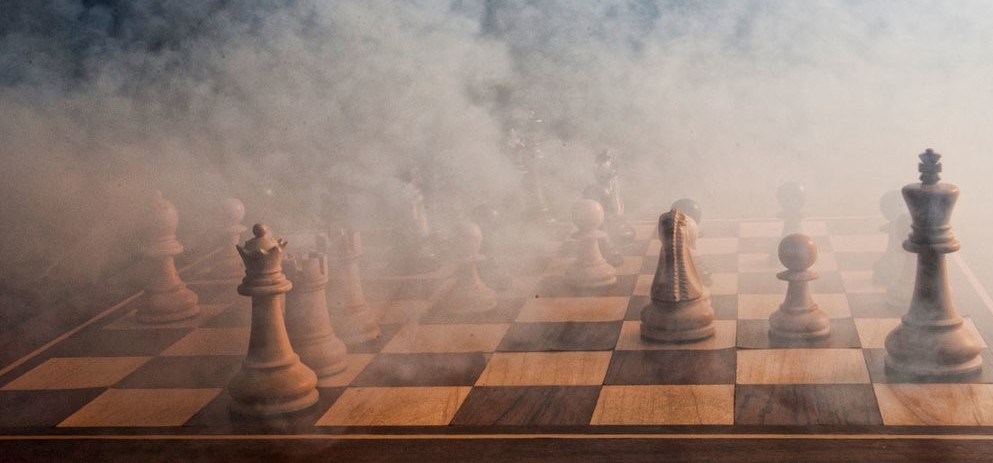



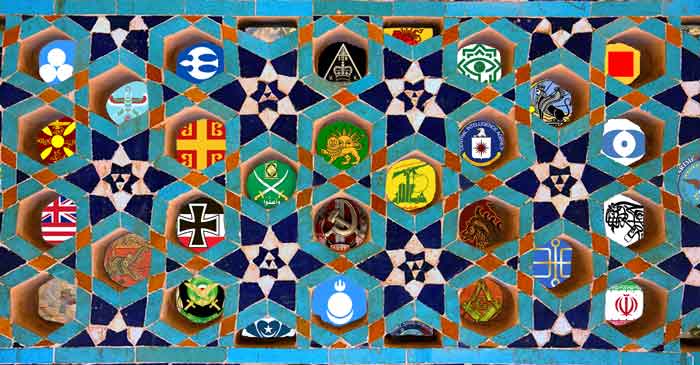
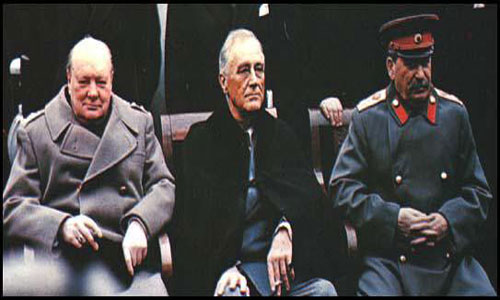

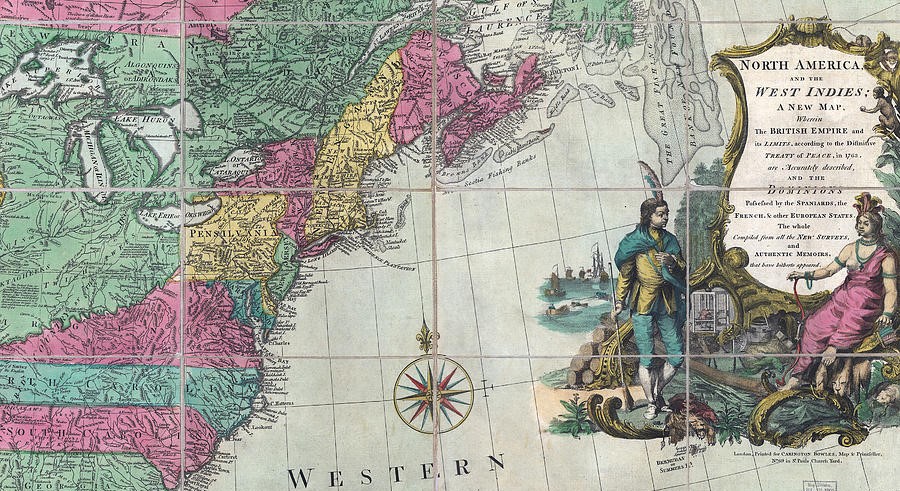

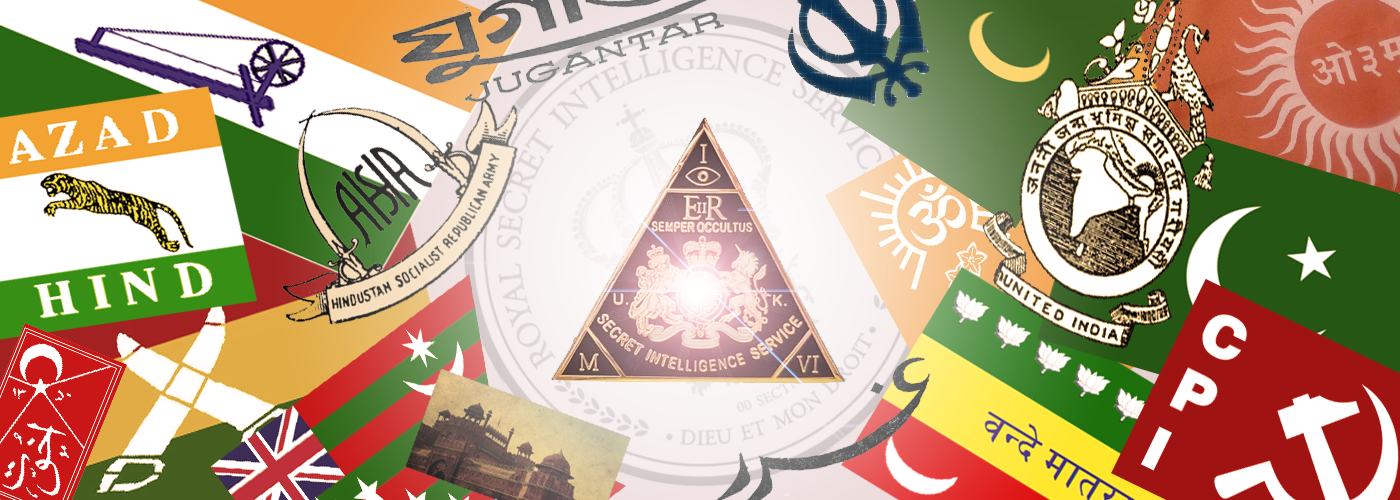




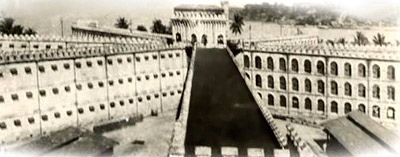


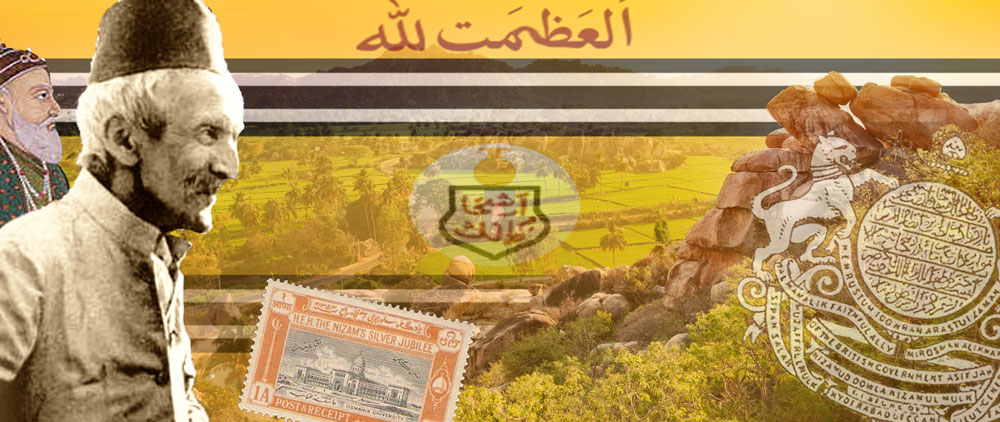





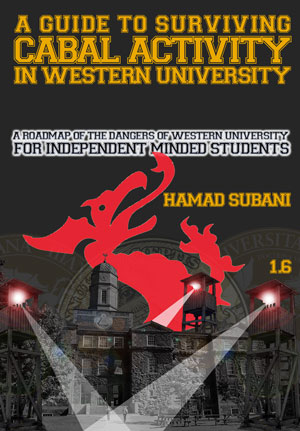

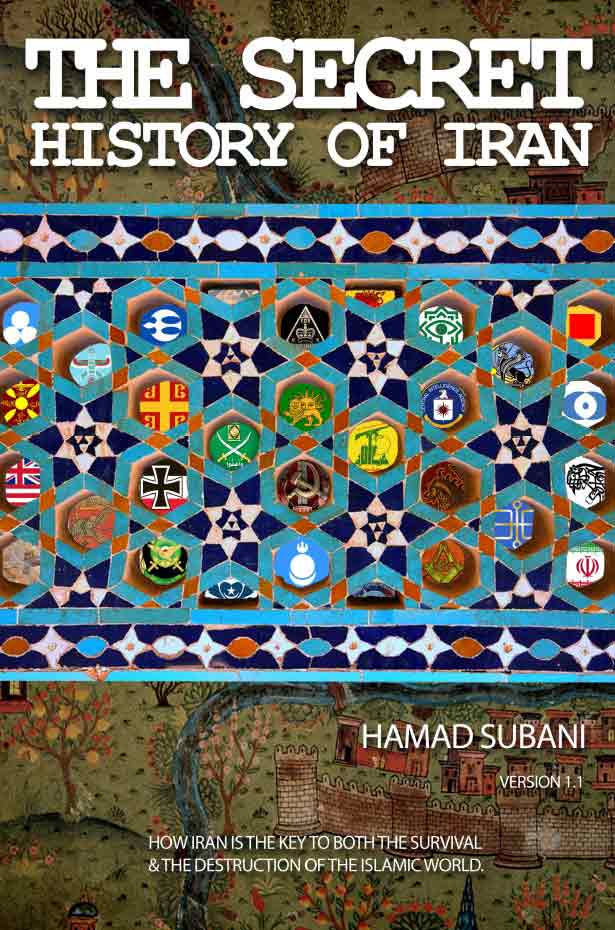
It appears that cultural genocide began in the “east” and has continued in this country as well. Although I have no ancestors from the east, to my knowledge, I sympethize with my eastern brothers in their struggle to be recognised and remembered for their contributions to todays knowledge and scientific discoveries. My ancestors, mostly, were American Indigeonous and Celtic, both whose societies and cultures were all but extinguished. Thank you contributures to this site of unbiased information. Aho